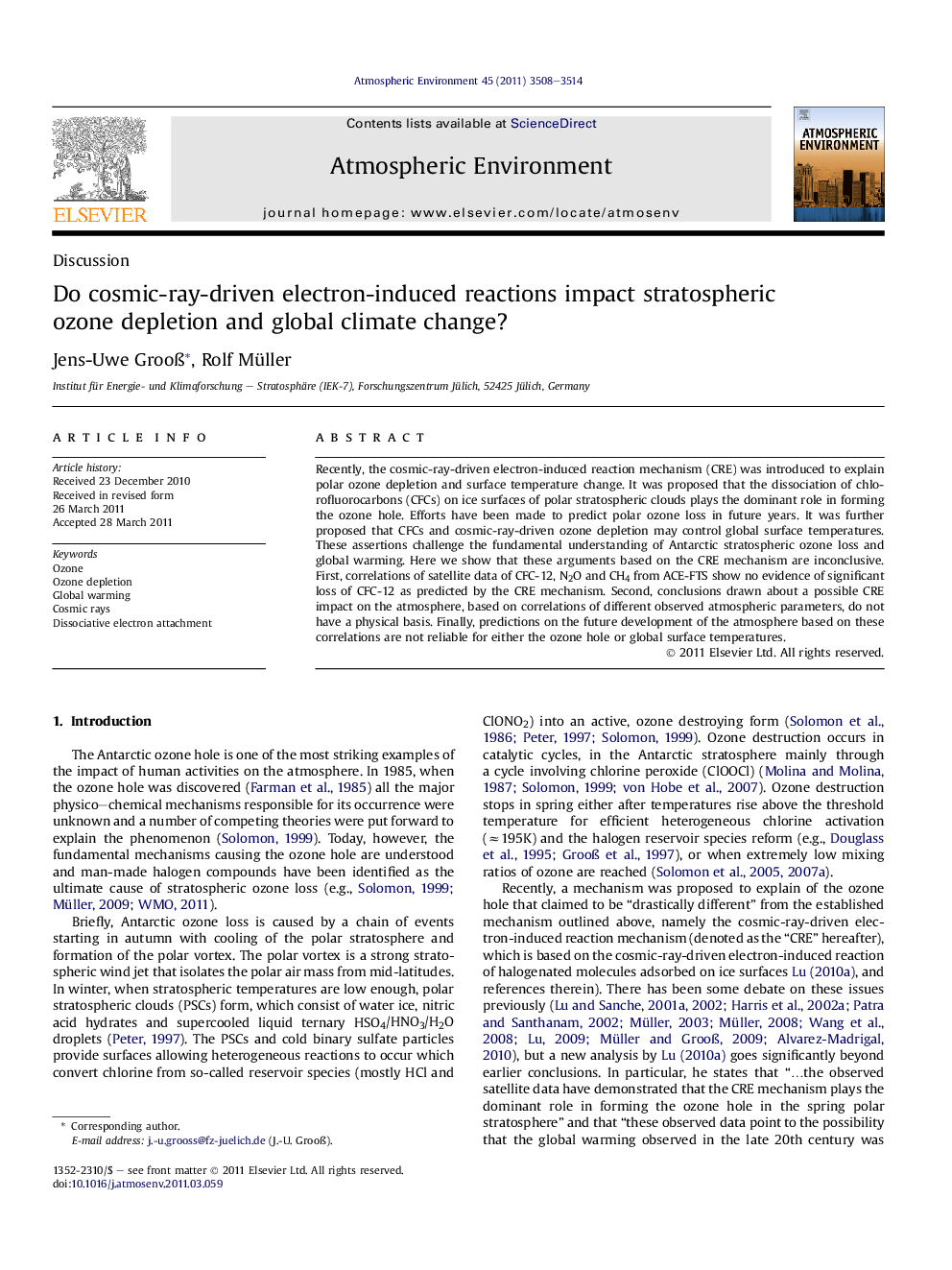| Article ID | Journal | Published Year | Pages | File Type |
|---|---|---|---|---|
| 4439582 | Atmospheric Environment | 2011 | 7 Pages |
Recently, the cosmic-ray-driven electron-induced reaction mechanism (CRE) was introduced to explain polar ozone depletion and surface temperature change. It was proposed that the dissociation of chlorofluorocarbons (CFCs) on ice surfaces of polar stratospheric clouds plays the dominant role in forming the ozone hole. Efforts have been made to predict polar ozone loss in future years. It was further proposed that CFCs and cosmic-ray-driven ozone depletion may control global surface temperatures. These assertions challenge the fundamental understanding of Antarctic stratospheric ozone loss and global warming. Here we show that these arguments based on the CRE mechanism are inconclusive. First, correlations of satellite data of CFC-12, N2O and CH4 from ACE-FTS show no evidence of significant loss of CFC-12 as predicted by the CRE mechanism. Second, conclusions drawn about a possible CRE impact on the atmosphere, based on correlations of different observed atmospheric parameters, do not have a physical basis. Finally, predictions on the future development of the atmosphere based on these correlations are not reliable for either the ozone hole or global surface temperatures.
